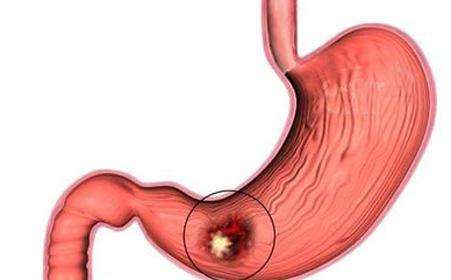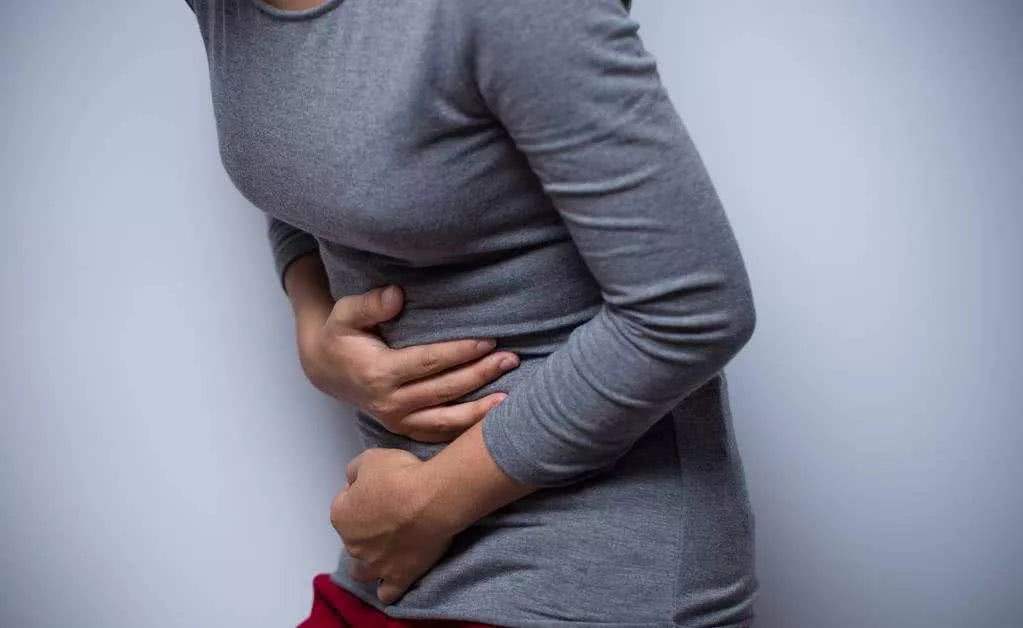SCI论文(www.lunwensci.com):
摘要:胃蛋白酶原、胃泌素17都是由胃粘膜细胞分泌,当胃粘膜发生病理变化时,分泌胃蛋白酶原、胃泌素17的细胞数量随之发生变化,如发生胃癌及癌前病变时,血清胃蛋白酶原、胃泌素17含量会改变,因此我们可以使用血清胃蛋白酶原与胃泌素17用于胃癌及癌前病变的诊断。
关键词:胃蛋白酶原;胃泌素17;胃癌;癌前病变
本文引用格式:田欣欣,韩锋,马许辉,等.胃蛋白酶原与胃泌素17用于胃癌早期诊断的研究进展[J].世界最新医学信息文摘,2019,19(98):158-160,166.
Research Progress of Pepsinogen and Gastrin 17 in Early Diagnosis of Gastric Cancer
TIAN Xin-xin1,HAN Feng2,MA Xu-hui1,SUO Zhi-min2*
(1.Department of Gastroenterology,Huaihe Hospital of Henan University,Kaifeng Henan;2.Department of Anesthesiology,the First Affiliated Hospital of Henan University,Kaifeng Henan)
ABSTRACT:Pepsinogen and gastrin 17 are secreted by gastric mucosal cells.When pathological changes occur in gastric mucosa,the number of cells secreting pepsinogen and gastrin 17 changes accordingly.If gastric cancer and precancerous lesions occur,the amount of serum pepsinogen and gastrin 17 will change,so we can use serum stomach.Proteinogen and gastrin 17 are used in the diagnosis of gastric cancer and precancerous lesions.
KEY WORDS:Pepsinogen;Gastrin 17;Gastric cancer;Precancerous lesions
0引言
胃癌(gastric cancer,GC)是世界上最常见的恶性肿瘤之一,随着国家的迅速发展,人们饮食结构的改变、工作压力的增大及幽门螺旋杆菌(Helicobacter pylori,H pylori)的感染,使得胃癌的发生趋向年轻化,胃癌发生的危险因素包括年龄、性别、家族史,高盐饮食,萎缩性胃炎(Atrophic gastritis)和H pylori感染[1]。根据中国癌症中心的最新统计数据显示尽管胃癌的总体发病率在下降,但在我国所有恶性肿瘤中仍处于第二位,略低于肺癌[2,3]。由于早期胃癌(early gastric cancer,EGC)无明显症状或仅有嗳气、上腹部不适等,不容易与慢性胃炎、消化性溃疡等腹部疾病相鉴别,以至于发现时已是晚期,晚期胃癌患者预后差,终末期阶段较痛苦,因此早发现、早治疗对于改善患者的预后、提高患者的生活质量尤为重要。目前胃癌的诊断仍需要胃镜检查及病理组织学活检,但病人难以耐受此项检查,依从性较差,因此近年来,不少学者试图寻找一种更为便捷、经济的方法发现胃癌及癌前病变。目前认为引起胃癌的主要因素是H pylori感染,1994年国际癌症研究机构将H pylori列为Ⅰ类致癌物[4]。胃蛋白酶原(pepsinogen,PG)是由胃粘膜细胞分泌,在胃腔内转变成胃蛋白酶后可水解食物中的蛋白质,一部分可进入血液循环,血清中PG浓度较稳定,因此血清PG含量可反映不同部位胃粘膜的分泌功能,进一步预测胃癌及癌前病变的发生。比如Miki[5]使用H pylori抗体结合胃蛋白酶原的ABC方法用于预测早期胃癌的发生。但是可能由于存在地域差异或饮食结构的不同,ABC方法在我国人群的胃癌检出率较低,因此Ni等人[6]则对ABC方法进行了改良,使用H pylori抗体联合胃蛋白酶原(PG)、胃泌素-17(Gastrin 17,G-17)(新ABC法)新评分系统对EGC筛查有较好的预测价值。Tu等[7]使用五种生物标志物的组合,包括血清PGⅠ,PGⅡ,PGⅠ/PGⅡ(PGR)比值、G-17和抗H pylori IgG抗体来筛选高危人群并预测胃癌(GC)的发生风险。近些年来关于非侵入性诊断EGC的研究逐渐增多,本文就胃蛋白酶原与胃泌素17用于胃癌早期诊断研究作相关阐述。
1胃蛋白酶原
1.1胃蛋白酶原结构与功能
胃蛋白酶原是由胃内主细胞合成,胃酸或已有活性的胃蛋白酶将胃蛋白酶原变为胃蛋白酶而发挥生物学作用,是天冬氨酸蛋白酶家族成员之一。在胃蛋白酶原研究的早期,各种分类的名称均被使用,如:在哺乳动物中,PG分为五种类型:PGA、PGB、PGC、PGF、PGY。其中PGC又称为前胃亚蛋白酶,PGY称为凝乳酶原[8]。在我们人类中,5种胃蛋白酶原A和2种前胃蛋白酶同工酶原在胃粘膜中检测到,这些分子种类被命名为胃蛋白酶原1至7[9]。由于结构以及免疫学特征的不同,胃蛋白酶原分为两种类型:PGⅠ(1-5)和PGⅡ(6-7),这也是我们经常使用的分类,并被广泛应用于临床研究中。PGⅠ主要由胃底主细胞分泌,PGⅡ除了由主细胞分泌,也由幽门腺和十二指肠近端粘膜分泌。胃粘膜萎缩时PGⅠ水平会降低,而PGⅡ通常变化不大,进一步导致PGⅠ与PGⅡ的比值下降。因此较低的PGⅠ水平或低的PGR都是胃粘膜萎缩的良好指标[10]。
1.2胃蛋白酶原与癌前病变
H pylori感染通过慢性萎缩性胃炎、肠化生、异型增生一系列病理变化导致胃癌的发展。H pylori经口入胃,一部分被胃酸杀灭,没被胃酸杀灭的幽门螺旋杆菌则定植于胃粘膜细胞表面与黏液层之间。其产生的尿素酶分解尿素产生的氨可中和胃酸形成利于自身定居及繁殖的微环境,使感染慢性化。H pylori感染可导致萎缩性胃炎的发生,而胃蛋白酶原水平又可作为胃萎缩的生物标志物[11,12]。所以近年来,常用PG值来区分是否有H pylori感染,相关研究表明了H pylori感染者的PGⅠ、PGⅡ低于非感染者,且在多变量逻辑回归分析中,发现PGⅡ值是H pylori相关的功能性消化不良症状改善的重要预测标志物[13]。然而一项关于初中生的研究表明H pylori感染者的PGⅠ和PGⅡ值高于非感染者,PGR低于非感染者。在非感染H pylori的学生中,男生的PGⅠ和PGⅡ值高于女生[14]。这可能与儿童时期分泌胃蛋白酶原的胃内主细胞发育不完全有关。初中生的年龄一般为12-15岁,有研究报道胃蛋白酶原水平与年龄相关,在生长阶段(1-16岁),PGⅠ水平随着年龄增长而增长,PGⅡ在开始轻微的下降后开始升高,两者水平均在16岁之后与成年人的水平相似[15]。有研究还发现H pylori感染的儿童PG值变化与未出现严重胃粘膜萎缩的成人相似[16]。随着年龄的增长,血清PGⅠ和PGⅡ水平逐渐升高且男性的PGⅠ、PGⅡ和PGR高于女性。这说明血清PG水平与年龄、性别、H pylori感染程度都是有关系的[17]。因此,我们在用PG筛查胃病时,应考虑年龄、性别和H pylori感染水平的影响因素。
消化性溃疡(Peptic ulcer,PU)是一种多因素、全球性疾病,主要累及胃及十二指肠。其发生的主要环节是侵袭作用与防御机制之间失去平衡所致,如胃酸、胃蛋白酶的侵袭与胃粘膜粘液碳酸氢盐屏障失衡,其中,胃溃疡主要是粘膜屏障功能降低,而十二指肠溃疡是胃酸的侵袭作用起主导。消化性溃疡(PU)发生时,胃酸对胃粘膜产生自我消化,胃蛋白酶水平升高,其发生的最常见原因是H pylori感染,另外与环境、生活方式、长期服用非甾体类抗炎药、遗传易感等有关。进食无规律、吸烟、长期精神紧张、应激及劳累则是消化性溃疡发生的主要诱因。Gantuya等人[18]研究发现胃蛋白酶原不仅是胃萎缩的预测指标,也可以预测慢性胃炎。也有研究报道胃蛋白酶原与消化性溃疡有关,早期研究发现,在一个家族中,患有消化性溃疡的人有较高水平的PGA,最近一项研究探讨了PGⅠ、PGⅡ与儿童消化性溃疡治疗前后的相关性,结果发现PGⅠ在胃溃疡治疗后明显低于治疗前水平[15]。结果提示通过检测血清胃蛋白酶原有望成为在胃镜检查前筛选儿童消化性溃疡的重要手段。因此可以利用血清胃蛋白酶原筛选消化性溃疡及评估胃粘膜状态改变。
慢性萎缩性胃炎(Chronic atrophic gastritis,CAG)是公认的胃癌前病变(Precancerous lesions of gastric cancer),在胃癌发病率较高的人群中,CAG的患病率较高,而在患有CAG的人群中,胃癌的风险显著增加[19,20]。当慢性胃炎向前发展,病变扩展至腺体深部,腺体破坏,数量减少,固有层纤维化,粘膜变薄,就发展成为萎缩性胃炎。胃镜下,萎缩性胃炎的粘膜色泽变淡,皱襞变细而平坦,有时可见粘膜血管纹。慢性萎缩性胃炎可分为A型和B型,A型胃炎主要与自身免疫有关,病变主要累及胃体,B型胃炎主要与H pylori感染有关,主要分布在胃窦[21]。慢性萎缩性胃炎发生时,分泌PGⅠ的主细胞数量会减少从而导致PGⅠ水平降低,而PGⅡ不仅由主细胞分泌,还由幽门腺和十二指肠近端粘膜分泌,所以PGⅡ水平一般变化不大,但当胃粘膜萎缩累及整个胃部时,PGⅡ也会下降,一般PGⅠ比PGⅡ下降的明显,从而PGR也会下降。目前,诊断萎缩性胃炎仍需要胃镜检查及病理组织活检,但由于其是一项有创检查,成本高且患者的耐受性较差,所以很难进行大规模筛查,幸运的是,当胃粘膜萎缩时,一些胃粘膜分泌的特定分子的血清浓度如胃蛋白酶原和胃泌素-17水平会发生变化,因此近年来常用PGⅠ及PGR水平来预测萎缩性胃炎。将胃蛋白酶原(PG)阳性定义为PGⅠ<70ng/ml,PGR<3.0[5]。
2胃泌素
2.1胃泌素的结构与功能
胃泌素主要由幽门腺的G细胞分泌,大部分作用于胃体的肠嗜铬细胞,刺激组胺的分泌从而促进胃体壁细胞合成及分泌盐酸及刺激主细胞分泌胃蛋白酶原。胃泌素本质上是蛋白质,有折叠的热力学和动力学特征[22],胃泌素前体被翻译和修饰之后被分成两个主要肽G-34和G-17[23],Copps等人发现G-17更活跃,并且主要分布在胃窦[24]。胃泌素除了可刺激胃酸分泌,还刺激胃上皮细胞迁移,释放成纤维细胞生长因子及其受体的激活以及激活蛋白激酶途径(Czin和Blanchard,2011年)。与胃蛋白酶原相比,G-17的生理调节更为复杂,G-17的低水平不仅是由胃窦粘膜萎缩引起也有可能是由高胃酸引起。反映控制白天胃酸分泌的正常反馈生理机制的血浆G-17变化很快,G-17的血浆水平对所有生理刺激、药物和饮食都很敏感。长期使用PPI可使血浆G-17水平平均升高2-5倍,升高多少取决于使用药物的种类和剂量。PPI的长期使用和随后胃泌素-17的升高也将导致由于泌酸腺肥大而引起的血浆PGS升高两倍,反过来,这种肥大可能是胃泌素对黏膜营养作用的结果[25]。
2.2胃泌素与癌前病变
H pylori感染时,胃泌素水平持续升高,胃泌素分泌的正常生理负反馈控制消失,根除H pylori治疗后,胃泌素水平降低,胃泌素分泌的正常反馈控制恢复[26]。KONTUREK等人[27]在H pylori感染的患者中检测到高浓度的胃泌素,也有研究发现H pylori感染引起胃粘膜慢性炎症时可能通过细胞因子如TNFa和IL-1可以增加胃泌素分泌[28]。幽门螺杆菌细胞毒素相关蛋白A(CagA)是幽门螺杆菌一种毒力因子[29]。之前的研究提出胃泌素启动子可能是CagA的转录靶点,CagA诱导胃泌素启动子甲基化从而激活胃泌素启动子,通过MEK/ERK和JAK1信号通路上调胃泌素的mRNA表达[29]。G-17的升高与H pylori感染及胃炎的严重程度有关,并且胃炎程度越重,G-17越高[30]。
萎缩性胃炎分为胃窦萎缩和胃体萎缩,胃泌素主要由胃窦粘膜G细胞分泌,当胃窦粘膜萎缩时,即胃窦粘膜不能或减少胃泌素的合成和释放,导致血浆中G-17的降低[31]。当胃体胃底粘膜萎缩时,胃酸水平会下降,低胃酸会负反馈胃泌素分泌水平,使胃泌素分泌增多。当胃窦和胃体同时存在萎缩时,血清G-17显著降低[19],因此血浆中高G-17提示了胃萎缩主要发生在胃体和胃底,如果G-17没有升高,胃萎缩主要出现在胃窦或同时存在于胃窦和胃体[32]。所以无论G-17降低或升高都可作为反映胃粘膜功能和结构的生物标志物,而PPI使用者胃粘膜正常时也会出现高的G-17水平,因此我们在用G-17筛查萎缩性胃炎时,应考虑PPI使用的影响因素。
3胃蛋白酶原及胃泌素17与胃癌
普遍认为,胃腺癌的发展顺序是从正常的胃粘膜到慢性胃炎、慢性萎缩性胃炎(CAG)、肠化生(IM)、异型增生(也称为不典型增生),最后是胃癌[33]。早发现、早诊断和早治疗作为胃癌的二级预防策略,是降低胃癌死亡率和延长胃癌患者生存率的关键,因此预测和筛选高风险胃癌尤其重要。胃癌的发生是多因素多过程的综合结果。先前的研究表明血清胃蛋白酶原(PG)水平可用于测定胃萎缩的存在和程度[34]。也有研究表明,胃蛋白酶原C不仅存在于胃组织中,也存在于胰岛组织[35]、前列腺[36]和肺[37]中,并且作为肿瘤诊断标志物,在前列腺癌中表达上调[38],在乳腺癌[39]和胃癌[40]中表达下调,还有研究发现PGC主要定位于肿瘤细胞的细胞质中,并且在肝癌组织中表达上调,与肿瘤的大小及不完全肝癌包膜形成有关[41]。这些研究提示我们胃蛋白酶原不仅仅与胃癌相关,也在其他组织中表达并且与其他肿瘤存在相关性,可深入探究是否可作为肿瘤诊断标志物进一步在人群中推广使用。在转基因小鼠的短期实验研究中,p53基因的完全缺失改变了PG表达,杂合子小鼠需要相对较长时间才能降低PGC蛋白的表达[42]。这些结果提示我们胃蛋白酶原的降低可能与抑癌基因的缺失有关,我们可以通过评估胃蛋白酶原的mRNA表达预测胃粘膜状态的改变。
胃泌素与胃肠道肿瘤的发生有关,作为一种生长因子增加肿瘤的扩散和血管生成并能传递抗凋亡特性及转录激活等作用[36]。胃泌素-17-白喉类毒素免疫原(G17DT),类似于G17的合成肽,可通过自身免疫系统产生所需要的抗体[23],早在1999年Watson等人[43]通过对注射人胃癌细胞株的小鼠进行G17DT的注射延长了小鼠的存活时间,随后Gilliam等人[44]在晚期胃癌患者中给予不同剂量的G17DT免疫原,在接受G17DT治疗的60%患者中,成功产生了抗胃泌素-17抗体及接受高剂量G17DT治疗的患者显示抗体反应更明显。因此Ajani等人[45]研究了晚期胃癌或食管癌患者接受了G17DT、顺铂和5氟尿嘧啶治疗,其中高剂量的G17DT进行肌肉注射发现:应答者的总生存期明显长于无应答者。这些研究说明胃泌素17可为胃癌的治疗提供一个新的视角。PGR和G17联合检测可提高慢性萎缩性胃炎诊断的准确性[46],当联合检测得到阳性结果时,需要使用胃镜仔细筛选患者,以便早期诊断和治疗。因此,当出现胃肠道疾病,特别是消化性溃疡、萎缩性胃炎等癌前病变和胃癌时,血清胃蛋白酶原和胃泌素具有诊断价值[47]。
4总结与展望
近年来,胃癌及癌前病变的诊疗已有大量的相关研究,而胃蛋白酶原与胃泌素17与胃癌及癌前病变具有一定的相关性。胃粘膜分泌PG及G-17,一部分透过毛细血管进入血液循环,因此可以通过测定血液中PG及G-17水平间接评价胃功能状态。上消化道器官功能是否会影响下消化道器官以及胃癌相关的标志物血清水平改变是否与结肠癌(CRC)的发展相关尚不清楚。有流行病学研究表明上消化道器官(胃)与下消化道器官(结肠和直肠)在起源和癌症的发展上有很多相似之处,例如,饮食的改变、活动规律和吸烟都与其致癌作用有关[48],最近有研究发现PGII、G-17和HP IgG与CRC风险有关[49]。而一项荟萃分析表明血清胃蛋白酶原测定不推荐用于食管鳞状细胞癌的诊断[50]。如上文所述,PG不仅存在于胃组织中,也存在于胰岛、前列腺、乳腺、肝细胞中,而G-17也存在于十二指肠、空肠、胰岛中,几乎对整个胃肠道均有作用。胃蛋白酶原、胃泌素17用于胃癌及癌前病变的诊断已经有大量文献报道,但用于胃癌或其他癌症的治疗及与其他肿瘤的相关性研究仍较少,其具体分子机制及与其他肿瘤相关性仍有待于进一步研究,或能为胃癌及其他肿瘤的治疗提供新的视角。
参考文献
[1]Cai Q,Zhu C,Yuan Y,et al.Development and validation of a prediction rule for estimating gastric cancer risk in the Chinese high-risk population:a na-tionwide multicentre study[J].2019.
[2]Chen W,Sun K,Zheng R,et al.Cancer incidence and mortality in China,2014[J].Chinese journal of cancer research=Chung-kuo yen cheng yen chiu,2018,30(1):1-12.
[3]Zheng R,Zeng H,Zhang S,et al.Estimates of cancer incidence and mortality in China,2013[J].Chinese journal of cancer,2017,36(1):66.
[4]Schistosomes,liver flukes and Helicobacter pylori.IARC Working Group on the Evaluation of Carcinogenic Risks to Humans.Lyon,7-14 June 1994[J].IARC monographs on the evaluation of carcinogenic risks to hu-mans,1994,61(1-241.)
[5]Miki K.Gastric cancer screening by combined assay for serum an-ti-Helicobacter pylori IgG antibody and serum pepsinogen levels-"ABC method"[J].Proceedings of the Japan Academy Series B,Physical and biolog-ical sciences,2011,87(7):405-14.
[6]Ni D Q,Lyu B,Bao H B,et al.Comparison of different serological methods in screening early gastric cancer][J].Zhonghua nei ke za zhi,2019,58(4):294-300.
[7]Tu H,Sun L,Dong X,et al.A Serological Biopsy Using Five Stomach-Specific Circulating Biomarkers for Gastric Cancer Risk Assessment:A Multi-Phase Study[J].The American journal of gastroenterology,2017,112(5):704-15.
[8]Kageyama T.Pepsinogens,progastricsins,and prochymosins:structure,function,evolution,and development[J].Cellular and molecular life sciences:CMLS,2002,59(2):288-306.
[9]Samloff I M.Slow moving protease and the seven pepsinogens.Electropho-retic demontration of the existence of eight proteolytic fractions in human gastric mucosa[J].Gastroenterology,1969,57(6):659-69.
[10]Kuipers E J.In through the out door:serology for atrophic gastritis[J].European journal of gastroenterology&hepatology,2003,15(8):877-9.
[11]Kiyohira K,Yoshihara M,Ito M,et al.Serum pepsinogen concentration as a marker of Helicobacter pyloriinfection and the histologic grade of gastritis;evaluation of gastric mucosa by serum pepsinogen levels[J].Journal of gas-troenterology,2003,38(4):332-8.
[12]Bang C S,Lee J J,Baik G H.Prediction of Chronic Atrophic Gastritis and Gastric Neoplasms by Serum Pepsinogen Assay:A Systematic Review and Meta-Analysis of Diagnostic Test Accuracy[J].Journal of clinical medi-cine,2019,8(5).
[13]Kawamura Y,Funaki Y,Yoshimine T,et al.Characteristics and Predictive Factor of Helicobacter pylori-Associated Functional Dyspepsia in Japanese Patients[J].Digestion,2019,1-9.
[14]Okuda M,Lin Y,Mabe K,et al.Serum pepsinogen values in Japanese junior high school students with reference to Helicobacter pylori infection[J].2019.
[15]Zhou B,Chen X,Huang B,et al.Changes in serum pepsinogen levels and their value as a predictor of treatment outcomes in children with peptic ulcer[J].Journal of paediatrics and child health,2019.
[16]Kikuchi S,Kurosawa M,Sakiyama T,et al.Long-term effect of Helicobacter pylori infection on serum pepsinogens[J].Japanese journal of cancer re-search:Gann,2000,91(5):471-6.
[17]Huang R G,Xiao H L,Zhou B,et al.Serum Pepsinogen Levels Are Correlated With Age,Sex and the Level of Helicobacter pylori Infection in Healthy Indi-viduals[J].The American journal of the medical sciences,2016,352(5):481-6.
[18]Gantuya B,Oyuntsetseg K,Bolor D,et al.Evaluation of serum markers for gastric cancer and its precursor diseases among high incidence and mortality rate of gastric cancer area[J].Gastric cancer:official journal of the Interna-tional Gastric Cancer Association and the Japanese Gastric Cancer Associa-tion,2019,22(1):104-12.
[19]Kikuchi R,Abe Y,Iijima K,et al.Low serum levels of pepsinogen and gastrin 17 are predictive of extensive gastric atrophy with high-risk of early gastric cancer[J].The Tohoku journal of experimental medicine,2011,223(1):35-44.
[20]Vannella L,Lahner E,Annibale B.Risk for gastric neoplasias in patients with chronic atrophic gastritis:a critical reappraisal[J].World journal of gastroen-terology,2012,18(12):1279-85.
[21]Dai Y C,Tang Z P,Zhang Y L.How to assess the severity of atrophic gastritis[J].World journal of gastroenterology,2011,17(13):1690-3.
[22]Dee D R,Horimoto Y,Yada R Y.Conserved prosegment residues stabilize a late-stage folding transition state of pepsin independently of ground states[J].PloS one,2014,9(7):e101339.
[23]Maddalo G,Spolverato Y,Rugge M,et al.Gastrin:from pathophysiology to cancer prevention and treatment[J].European journal of cancer preven-tion:the official journal of the European Cancer Prevention Organisation(ECP),2014,23(4):258-63.
[24]Copps J,Murphy R F,Lovas S.The production and role of gastrin-17 and gastrin-17-gly in gastrointestinal cancers[J].Protein and peptide let-ters,2009,16(12):1504-18.
[25]Agreus L,Storskrubb T,Aro P,et al.Clinical use of proton-pump inhibi-tors but not H2-blockers or antacid/alginates raises the serum levels of ami-dated gastrin-17,pepsinogen I and pepsinogen II in a random adult popula-tion[J].Scandinavian journal of gastroenterology,2009,44(5):564-70.
[26]Liu Y,Vosmaer G D,Tytgat G N,et al.Gastrin(G)cells and somatostatin(D)cells in patients with dyspeptic symptoms:Helicobacter pylori associated and non-associated gastritis[J].Journal of clinical pathology,2005,58(9):927-31.
[27]Konturek P C,Hartwich A,Zuchowicz M,et al.Helicobacter pylori,gastrin and cyclooxygenases in gastric cancer[J].Journal of physiology and pharmacolo-gy:an official journal of the Polish Physiological Society,2000,51(4 Pt 1):737-49.
[28]D'Onghia V,Leoncini R,Carli R,et al.Circulating gastrin and ghrelin levels in patients with colorectal cancer:correlation with tumour stage,Helicobacter pylori infection and BMI[J].Biomedicine&pharmacotherapy=Biomedecine&pharmacotherapie,2007,61(2-3):137-41.
[29]Xie Y,Zhou J J,Zhao Y,et al.H.pylori modifies methylation of global genomic DNA and the gastrin gene promoter in gastric mucosal cells and gastric can-cer cells[J].Microbial pathogenesis,2017,108:129-36.
[30]Parhusip D H,Siregar G A,Dairi L B.The Difference of Serum Gastrin-17 Level Based on Gastritis Severity and Helicobacter Pylori Infection[J].Open access Macedonian journal of medical sciences,2019,7(8):1266-9.
[31]Vaananen H,Vauhkonen M,Helske T,et al.Non-endoscopic diagnosis of atrophic gastritis with a blood test.Correlation between gastric histology and serum levels of gastrin-17 and pepsinogen I:a multicentre study[J].European journal of gastroenterology&hepatology,2003,15(8):885-91.
[32]Agreus L,Kuipers E J,Kupcinskas L,et al.Rationale in diagnosis and screening of atrophic gastritis with stomach-specific plasma biomarkers[J].Scandinavian journal of gastroenterology,2012,47(2):136-47.
[33]Correa P.A human model of gastric carcinogenesis[J].Cancer re-search,1988,48(13):3554-60.
[34]Agkoc M,Dursun H,Albayrak F,et al.Usefulness of serum pepsinogen levels as a screening test for atrophic gastritis and gastric cancer[J].The Eurasian journal of medicine,2010,42(1):15-8.
[35]Szecsi P B,Halgreen H,Poulsen S S,et al.Demonstration of pepsinogen C in human pancreatic islets[J].Gut,1987,28(10):1208-14.
[36]Diaz M,Rodriguez J C,Sanchez J,et al.Clinical significance of pepsinogen C tumor expression in patients with stage D2 prostate carcinoma[J].The Inter-national journal of biological markers,2002,17(2):125-9.
[37]Foster C,Aktar A,Kopf D,et al.Pepsinogen C:a type 2 cell-specific protease[J].American journal of physiology Lung cellular and molecular physiolo-gy,2004,286(2):L382-7.
[38]Antunes A A,Leite K R,Sousa-Canavez J M,et al.The role of prostate specific membrane antigen and pepsinogen C tissue expression as an adjunctive me-thod to prostate cancer diagnosis[J].The Journal of urology,2009,181(2):594-600.
[39]Vizoso F,Sanchez L M,Diez-Itza I,et al.Pepsinogen C is a new prognostic marker in primary breast cancer[J].Journal of clinical oncology:official jour-nal of the American Society of Clinical Oncology,1995,13(1):54-61.
[40]Kon O L,Yip T T,Ho M F,et al.The distinctive gastric fluid proteome in gastric cancer reveals a multi-biomarker diagnostic profile[J].BMC medical genomics,2008,1(54).
[41]Chen H,Zhu H R,Yu X N,et al.Overexpressed pepsinogen C is associated with poor prognosis in human hepatocellular carcinoma:a tissue microarray study[J].Cancer management and research,2019,11(29):27-34.
[42]Yamamoto M,Tsukamoto T,Sakai H,et al.p53 knockout mice(-/-)are more susceptible than(+/-)or(+/+)mice to N-methyl-N-nitrosourea stomach carcinogenesis[J].Carcinogenesis,2000,21(10):1891-7.
[43]Watson S A,Morris T M,Varro A,et al.A comparison of the therapeutic effectiveness of gastrin neutralisation in two human gastric cancer models:relation to endocrine and autocrine/paracrine gastrin mediated growth[J].Gut,1999,45(6):812-7.
[44]Gilliam A D,Watson S A,Henwood M,et al.A phase II study of G17DT in gastric carcinoma[J].European journal of surgical oncology:the journal of the European Society of Surgical Oncology and the British Association of Surgical Oncology,2004,30(5):536-43.
[45]Ajani J A,Hecht J R,Ho L,et al.An open-label,multinational,multicenter study of G17DT vaccination combined with cisplatin and 5-fluorouracil in patients with untreated,advanced gastric or gastroesophageal cancer:the GC4 study[J].Cancer,2006,106(9):1908-16.
[46]Yu G,Wang G X,Wang H G,et al.The value of detecting pepsinogen and gastrin-17 levels in serum for pre-cancerous lesion screening in gastric cancer[J].Neoplasma,2019,
[47]Daugule I,Sudraba A,Chiu H M,et al.Gastric plasma biomarkers and Operative Link for Gastritis Assessment gastritis stage[J].European journal of gastroenterology&hepatology,2011,23(4):302-7.
[48]Torre L A,Siegel R L,Ward E M,et al.Global Cancer Incidence and Mortality Rates and Trends--An Update[J].Cancer epidemiology,biomarkers&prevention:a publication of the American Association for Cancer Research,cosponsored by the American Society of Preventive Oncology,2016,25(1):16-27.
[49]Zhang Q Y,Lv Z,Sun L P,et al.Clinical significance of serum markers reflecting gastric function and H.pylori infection in colorectal cancer[J].Journal of Cancer,2019,10(10):2229-36.
[50]Liu X B,Gao Z Y,Zhang Q H,et al.Serum pepsinogen assay is not recommended for the diagnosis of esophageal squamous cell carcinoma:a systematic review and meta-analysis[J].Cancer management and research,2019,(11)5643-54.
关注SCI论文创作发表,寻求SCI论文修改润色、SCI论文代发表等服务支撑,请锁定SCI论文网! 文章出自SCI论文网转载请注明出处:https://www.lunwensci.com/yixuelunwen/26412.html


